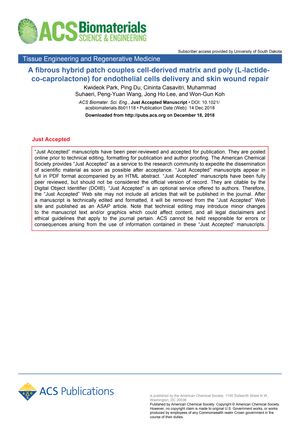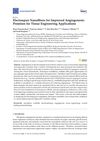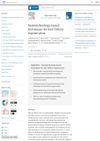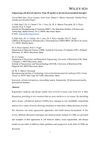A Fibrous Hybrid Patch Couples Cell-Derived Matrix and Poly(L-Lactide-Co-Caprolactone) for Endothelial Cells Delivery and Skin Wound Repair
December 2018
in “
ACS Biomaterials Science & Engineering
”
fibrous hybrid patch human fibroblast-derived extracellular matrix poly(L-lactide-co-caprolactone) skin wound repair endothelial cell delivery human umbilical vein endothelial cells vascular morphogenesis human dermal fibroblasts wound healing hair follicle reappearance neovascularization cell-matrix interactions tissue engineering regenerative medicine hFDM PLCL HUVECs hDFB

TLDR The new patch made of cell matrix and a polymer improves wound healing and supports blood vessel growth.
The 2018 study explored a novel fibrous hybrid patch, combining human fibroblast-derived extracellular matrix (hFDM) with poly(L-lactide-co-caprolactone) (PLCL), for its potential in skin wound repair and endothelial cell delivery. The hFDM-PLCL patch was shown to significantly enhance human umbilical vein endothelial cells (HUVECs) adhesion, proliferation, and vascular morphogenesis in vitro, as well as attract human dermal fibroblasts (hDFB) in migration assays. In vivo, the patch improved wound healing in a mouse model, evidenced by faster wound closure, thinner epidermis, and signs of skin tissue regeneration, including hair follicle reappearance and increased neovascularization. The study concluded that the hFDM-PLCL patch provides a favorable microenvironment for cell-matrix interactions and has potential for use in tissue engineering and regenerative medicine. The number of people or animals involved in the study was not specified, but the number of samples used in various assays ranged from n=3 to n=4 for each group.


